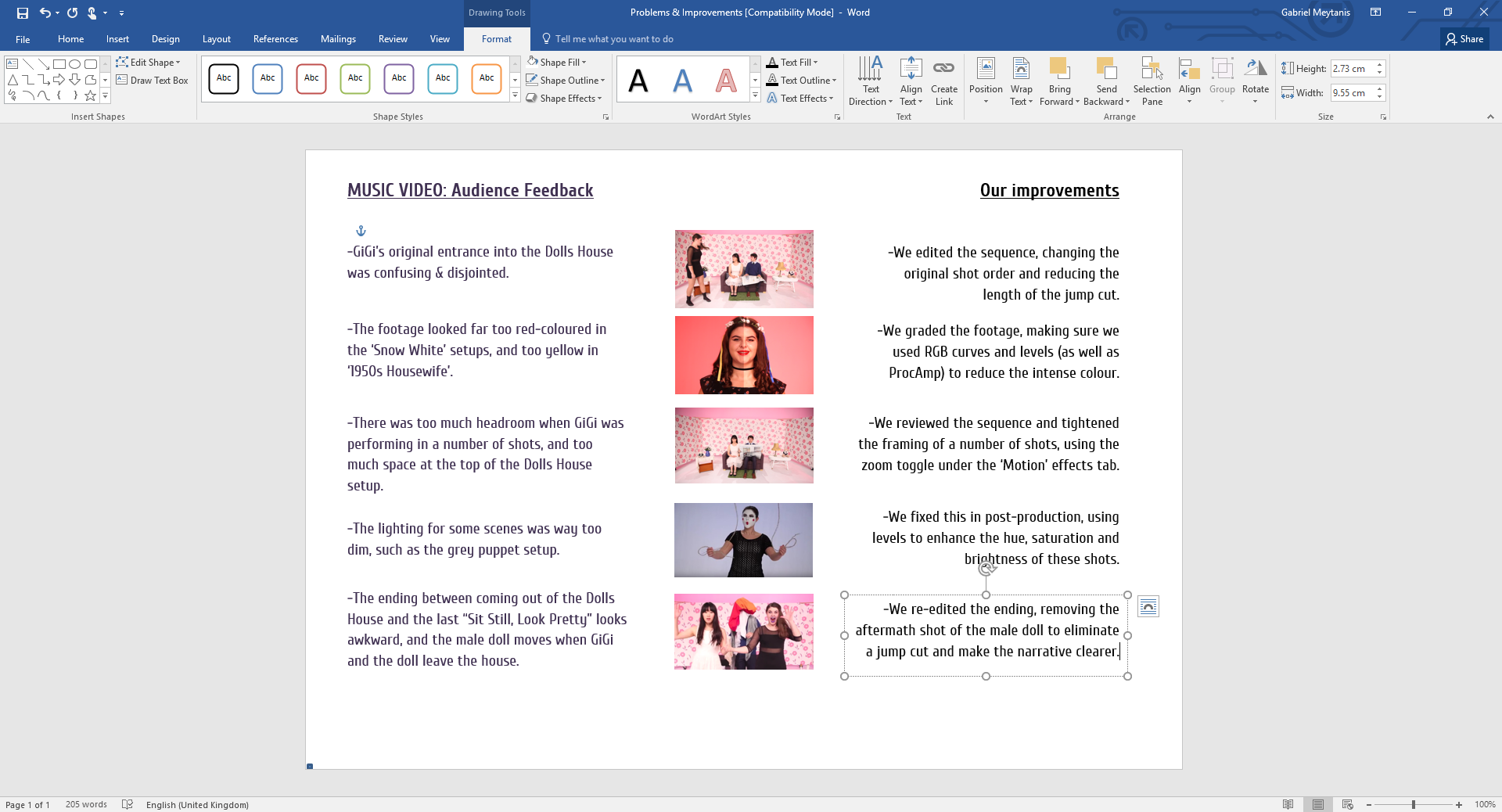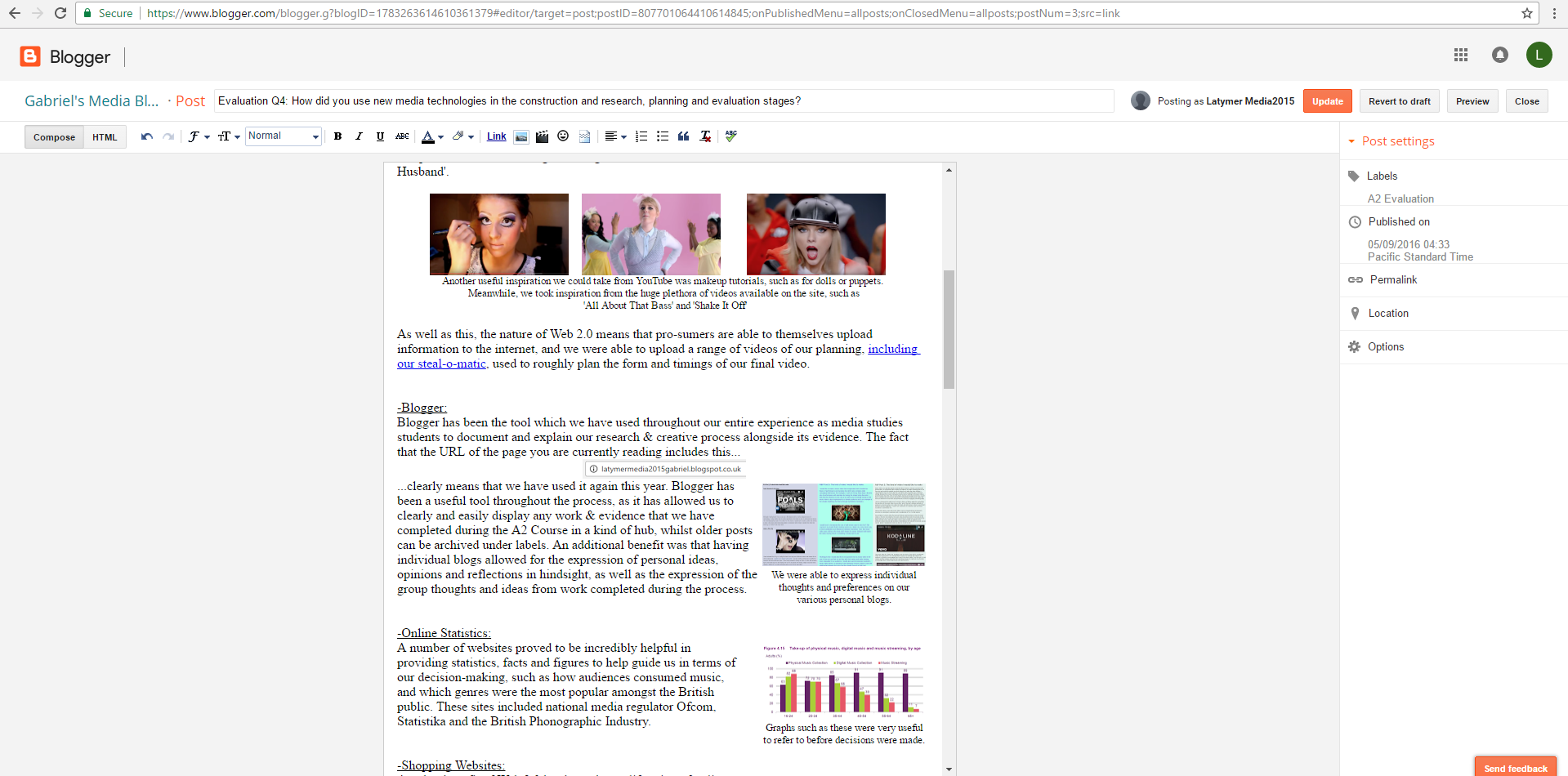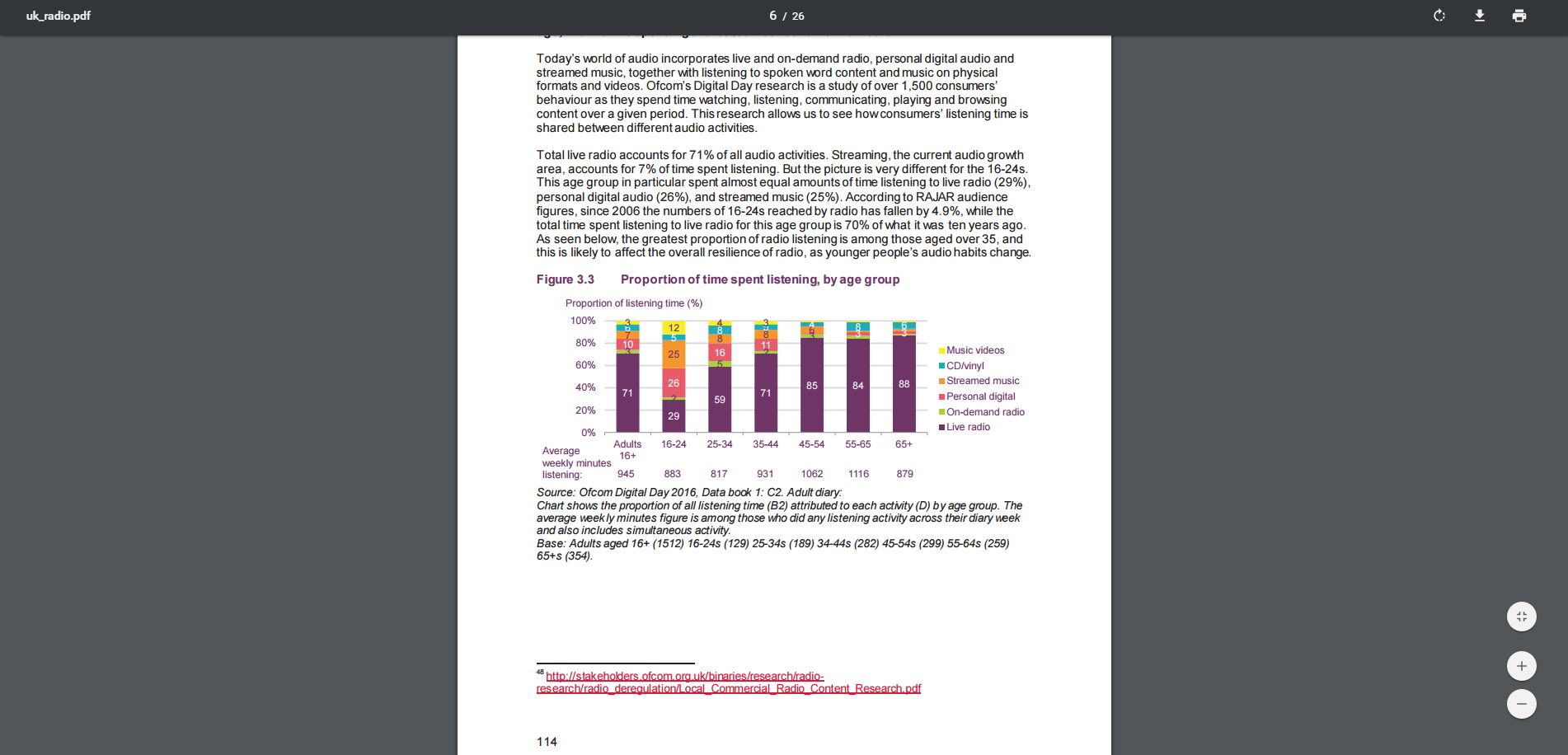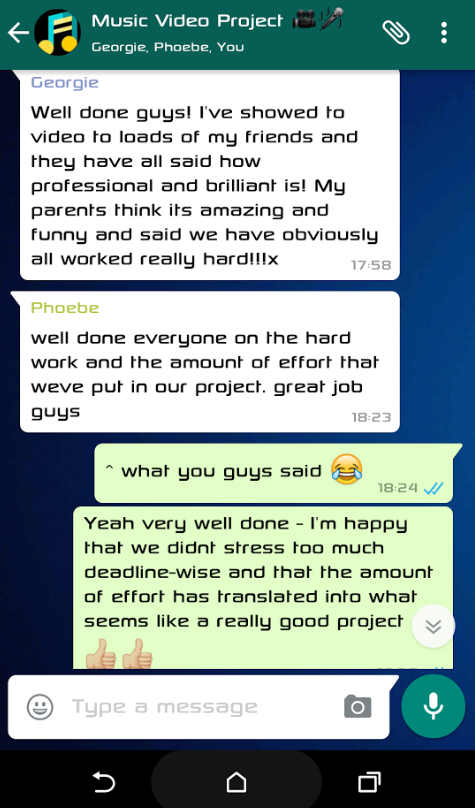Pros and Cons of New Media Technologies during
Research & Planning
Microsoft Word:
Pros:
-The technology is extremely simple to use, and offers a user-friendly interface and a help search if need be.
-Microsoft Word offers a plethora of different tools, such as graph and table wizards, which enabled us to easily and professionally present data, as well as construct documents such as the call sheet & shootboard.
Cons:
-Pasting and moving images can be convoluted, and you have to select an image wrap option to move photos.
-Word has a number of different versions (e.g 2007, 2010, 2016) which can alter a document if it is transferred in a different format.

YouTube:
Pros:
-YouTube and sister service Vevo have a vast range of videos and music videos which we were able to use as references during our project. This includes whilst creating a steal-o-matic.
-The site also offers a number of useful features, such as recommended videos, which reduced the time it took to search and pinpoint videos which would influence our project decisions.
Cons:
-The processing time when uploading videos (not necessarily large files, either) can be absolutely huge.
-Adverts are a regular occurrence before videos which can be annoying. Also, an external service must be used to download videos, as there is no option to do so on the site itself.

Blogger:
Pros:
-An extremely easy to use webtool, which can support images & videos to help structure a blog entry.
-Is a free-to-use tool. As it is under the Google umbrella, importing content and files from other Google products like YouTube is made very simple.
Cons:
-Basic knowledge of html is often required - especially when there are occasional formatting issues.
-Positioning images, videos and any framed objects like slideshows and Prezis is very difficult, and you cannot simply drag and drop them.

Online Statistics:
Pros:
-Statistics are based on a huge range of media factors, from music consumption methods to mobile pho
-Are very informative and relevant - they are often broken down into the demographics which we are aiming to target (e.g 16-24 year olds).
Cons:
-These statistics and graphs are often (as in the case of Ofcom and BPI) located within a huge pdf document and can be hard to find.
-Some services & websites (Statista being an example) charge money to access certain "premium" statistics, or the most recent data.

WhatsApp:
Pros:
-WhatsApp enables instant communication between multiple people. You are also - as well as messages - able to send videos, images and links to webpages.
-The portability of (technologically-converged) smartphones allowed us to contact each other on-the-go.
Cons:
-WhatsApp requires an internet connection to work - this means that if accessed on-the-go, mobile data often has to be used, which can be expensive.
-Only smartphones are supported. Had a group member not possessed a smartphone (despite the chances being very slim), it would have been difficult to keep in contact as a group.
